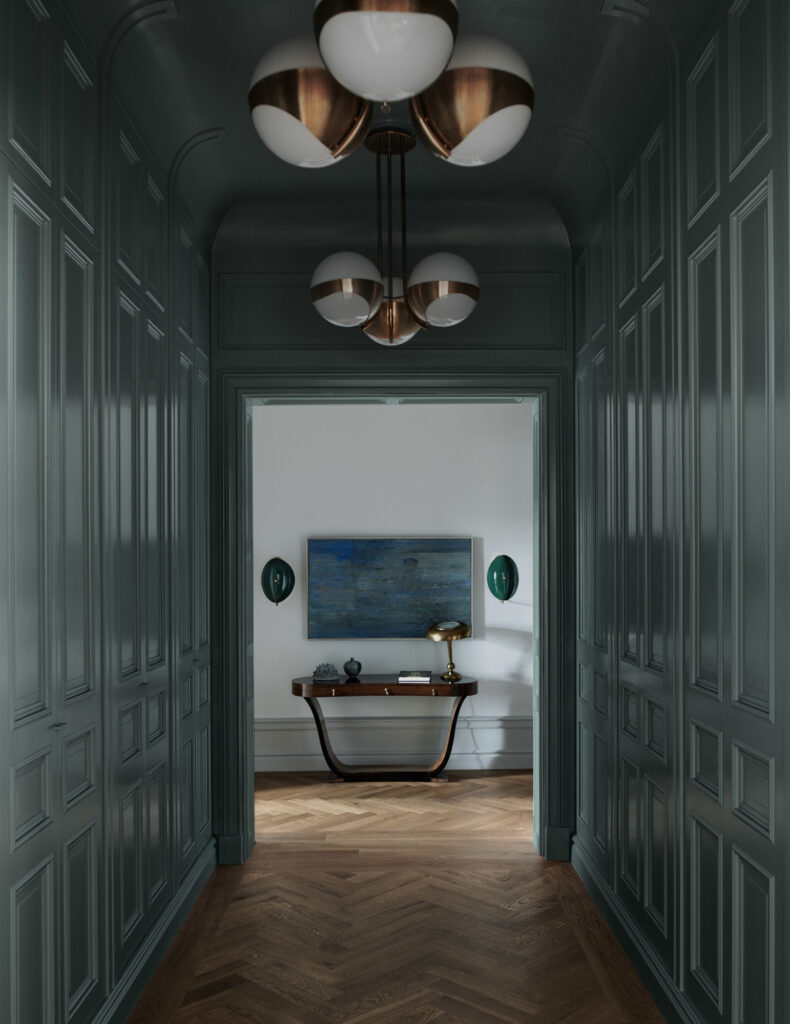
Architecture and interior design are two sides of the same coin or in this case, space. We cannot focus solely on one aspect while overlooking the way both influence each other and combine to form a cohesive dialogue. Moreover, the creation of harmonious interiors that merge seamlessly with architecture contributes to an aesthetic and functional appeal that reflects a deep sense of purpose. This intentional correlation between architecture and design may seem as a given when we first gaze at a home or public space; however, we ourselves as occupants can contribute to the purposeful design of our interiors by taking into account certain factors that reinforce our space’s function and identity.

Understanding architecture
Whether one possesses an architect’s gaze or not, there are key features that we must familiarize ourselves with while crafting our interiors, such as the architectural style of a space. This imperative piece of information can reveal whether we are dealing with a modern, traditional, minimalist, or eccentric design and thus, adapt our future decor according to the appropriate style. Furthermore, one can even take advantage of the existing architectural features by highlighting elements such as arches, columns, or exposed beams, and allowing the interior design to showcase and complement these unique touches.

One way of highlighting the union between architectural elements and interior decor is by turning to lighting as a way to draw attention to unique architectural features just like brightness levels on a perfectly set-up stage. Additionally, furnishings are a natural means of echoing the shapes of such architectural elements either through their own composition or based on their layout to emphasize a graceful flow of details indoors. This concept is what we call the spatial flow; the arrangement of furniture in a way that enhances the circulation patterns and maintains a sense of openness or intimacy depending on the architectural intent. Thus, if the architectural style conveys an open concept, the interior design should also maintain this sense of fluidity between different areas and avoid bulky and obstructive furniture.

Maintaining a consistent style
Now that we have touched upon the importance of adhering to a particular design for the skeleton and inner decor of a space, the next step is to establish a material continuity that will create the impression of a seamless transition between architecture and the interior arrangement. Not only is aesthetic important but also functionality is the primary concern as we aim for easy navigation based on the flow of elements within our spaces and consideration for the scale and proportion of furniture and decor in relation to the architectural elements.

One way of approaching this method is by viewing it as a study on the way that different factors fit harmoniously within a space without overwhelming or underwhelming the existent structure. This is no simple task as it requires us to take a step back and observe the design as a whole, just like a painter takes distance from their canvas every now and then to look at the cohesiveness within the complete work. For example, imagine an apartment’s exterior with a stone facade which can be gracefully linked to the interior spaces by integrating similar stone elements indoors with accent walls or fireplace surrounds.

Color alignment
Similarly to the materials and design styles that tie architecture and interiors together, color can serve as a strong binding factor in establishing a visual connection that owners and visitors can appreciate. For this, we must consider even the colors of materials themselves which are used in the architecture before incorporating them into the interior. If the exterior displays a specific type of wood, stone, or metal, similar types or tones of materials and finishes can reside inside to create interiors that harmonize with their outer shell.

Moreover, we can begin this color expedition by selecting an indoor palette that either complements the exterior or features analogous shades that echo the architectural mood. There are countless factors where we can display these complementary tones, such as via wall colors, furniture upholstery, and accessories that resonate with the building materials or overall architectural scheme. Art and decor, for example, are the most creative means of connecting the visual aesthetic and architecture together through color. If this is not enough, then one can always turn towards natural and artificial lighting to enhance certain architectural features and set an overall ambience that matches the outdoor and indoor ambience.

Merging architecture with built-ins
What better way of continuing the architectural design narrative than by incorporating the same language through built-in furniture and cabinetry. These tailored solutions can echo the same style as the exterior’s composition by following the same lines as the architecture. This means, customizing built-in shelves, cabinets, or furniture that echoes, for instance, the sleek and minimalist character of the external composition through clean lines and sharp angles.

By intricately weaving built-in features into the system’s framework we can not only align with the visual architectural appeal but also optimize an interior’s performance with additional features that bring practicality to our lives. Through this approach we observe a symbiotic relationship where architecture provides the structure for decor to operate effectively and creatively.

Observing the bigger picture
Uniting architecture and interior design is an act of taking distance to observe the composition as a whole instead of focusing solely on the individual factors as separate from each other. Both types of design are indeed mutually influenced and therefore, they have the potential to complement each other and the overall conception of the space in question. The difficult part lies in knowing where to start looking and identifying the connections between the exterior and interior to establish a more fluid dialogue between the two. Therefore, today we encourage you to take a step back and visualize what message your architecture conveys and how it is echoed across your interior design.
